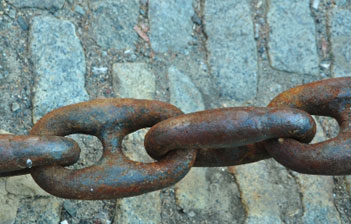Many Lyme patients experience symptoms from both Heavy Metals and Intestinal Parasites. In fact, many people without Lyme disease experience this, too. With the pollution of our air, water, food source, products, and environment, it is hard not to have some problems with heavy metals these days. And with commercial meat production, parasites are more common than you think.
Most people believe you have to go to a foreign country and drink contaminated water to obtain these illnesses, but this just isn’t true. It is important to be tested and determine if any of these are present in your body prior to beginning treatment. Symptoms can be similar and toxic loads can increase the Herxheimer Reaction during treatment. In the case of Heavy Metal Toxicity, Candida will thrive so long as they are present and your immune system and health will continue to decline.
What is Heavy Metal Poisoning or Toxicity in humans?
Heavy metals are not digestible and accumulate in the soft tissues of the body. It could be excess copper from your water pipes; mercury from eating fish or crumbling dental fillings; aluminum from additives, cosmetics, and deodorants; lead from paint in your house; arsenic or cadmium from your local water source; smoking cigarettes; antibiotics or other pharmaceutical medications; air quality; occupational dust exposure; or from handling contaminated soil.
There are differing symptoms depending on the type of metal, but they generally include nausea, vomiting, headaches, and a metallic taste in mouth. Diagnosis and treatment are essential. You can do your own at-home test kits if necessary. I would recommend having your doctor do a full work up on you and test at least blood and urine levels for all of the following: Arsenic, Lead, Mercury, Cadmium, and Aluminum (see the Vitamins & Minerals page for a complete list).
Treatment varies depending on the metal and the severity. Generally chelation is required which will remove the metals from your system. Timing is crucial if chelation is necessary because it will also remove nutrients and medications from your body. However, any permanent damage that has occurred is irreversible. Also, it is important to determine the source and limit exposure to prevent future toxicity.
If you have elevated levels of heavy metals in your body, you need to address it. You will never succeed in Lyme or Candida treatment without taking care of this if it is an issue. Discuss your options with your doctor.
What are Human Parasites?
Approximately 80% of all humans are infested with some type of Parasite. There are over 100 species of human parasites. Some attack the skin, eyes, intestines, organs, joints, blood, and soft tissue. They are stealthy and they can do an immense amount of damage to our bodies and our health. It is important to understand first what they are, where they come from, how to recognize them, and what to do about it if you are infected.
Parasites are organisms that live in or on another organism, benefiting and relying on the host for nutrients at the host’s expense. They can be ingested, inhaled, or transferred by vectors such as ticks and mosquitos. Single celled Parasites can reproduce quickly and in some cases form cysts. Multi-celled Parasites generally lay eggs in the thousands. It is equally important to get rid of Parasites along with their eggs.
Parasites are more common than you might think within our food supply. It is important to inspect and cook meat thoroughly. Inspect and wash fruit thoroughly, discarding any bad portions. Drinking clean, pure water is a must. Limiting your exposure to Ectoparasites is also recommended as many of them are vectors, or carriers, of protozoan parasites and other infectious diseases and microbes. Be sure to wash hands thoroughly after using the restroom, handling or working with raw meat, soil, animal or human feces.
Symptoms of Parasitic infestation mimic many other diseases. It can take years before symptoms evolve, and permanent damage can be done by parasites. Laboratory tests are usually successful in determining if you have a parasitic infection. For Protozoa type infestations, blood work is needed. For Worm infestations, Complete Profile Stool Analysis is needed. And Ectoparasites are usually visible on the surface of the skin. Treatment differs depending on the type of parasite(s) present.
Doing a Parasitic/Colon Cleanse once or twice a year is something I personally highly recommend. Not only is it good to clean out your colon, it is a good preventative measure for parasites to ensure that if you do have them, they aren’t there for long.
Classes of Human Parasites
Protozoa
Description: Microscopic single-celled organisms which can be free-living or parasitic in nature.
Types:
Sarcodina (amoebas)
Mastigophora (flagellates)
Ciliophora (ciliates)
Sporozoa (spore-forming)
Helminths (Nematode, Cestoda, Trematode)
Description: Worm-like multi-celled organisms, visible to the naked eye in adult stages which can be free-living or parasitic in nature.
Types:
Flatworms (platyhelminths: trematodes (flukes) and cestodes (tapeworms)
Thorny-headed worms (acanthocephalins)
Roundworms (nematodes)
Ectoparasites
Description: blood-sucking arthropods and arthropod vectors.
Types:
Ticks
Fleas
Lice
Mites
Mosquitos

Heavy Metals & Parasites are destructive to the human body.